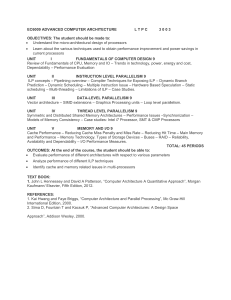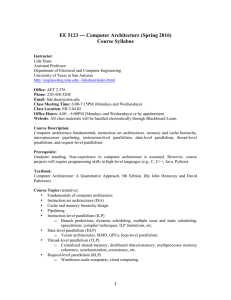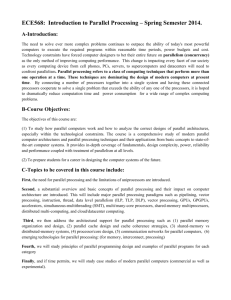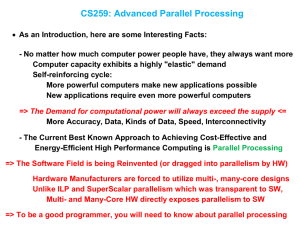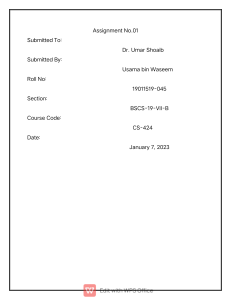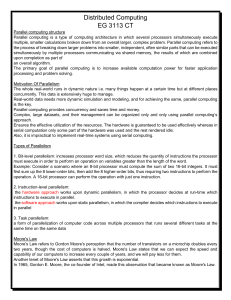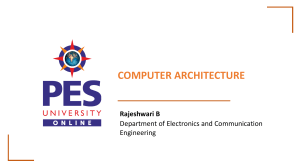Course Syllabus ECE 622 - Digital Systems Structure Department
advertisement
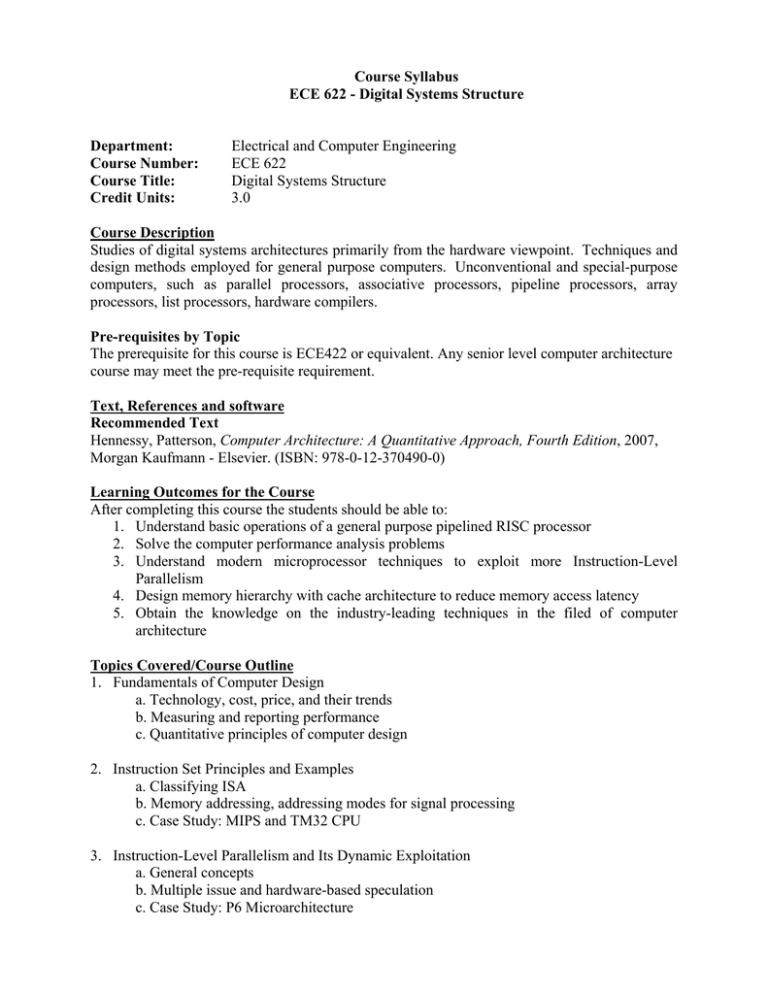
Course Syllabus ECE 622 - Digital Systems Structure Department: Course Number: Course Title: Credit Units: Electrical and Computer Engineering ECE 622 Digital Systems Structure 3.0 Course Description Studies of digital systems architectures primarily from the hardware viewpoint. Techniques and design methods employed for general purpose computers. Unconventional and special-purpose computers, such as parallel processors, associative processors, pipeline processors, array processors, list processors, hardware compilers. Pre-requisites by Topic The prerequisite for this course is ECE422 or equivalent. Any senior level computer architecture course may meet the pre-requisite requirement. Text, References and software Recommended Text Hennessy, Patterson, Computer Architecture: A Quantitative Approach, Fourth Edition, 2007, Morgan Kaufmann - Elsevier. (ISBN: 978-0-12-370490-0) Learning Outcomes for the Course After completing this course the students should be able to: 1. Understand basic operations of a general purpose pipelined RISC processor 2. Solve the computer performance analysis problems 3. Understand modern microprocessor techniques to exploit more Instruction-Level Parallelism 4. Design memory hierarchy with cache architecture to reduce memory access latency 5. Obtain the knowledge on the industry-leading techniques in the filed of computer architecture Topics Covered/Course Outline 1. Fundamentals of Computer Design a. Technology, cost, price, and their trends b. Measuring and reporting performance c. Quantitative principles of computer design 2. Instruction Set Principles and Examples a. Classifying ISA b. Memory addressing, addressing modes for signal processing c. Case Study: MIPS and TM32 CPU 3. Instruction-Level Parallelism and Its Dynamic Exploitation a. General concepts b. Multiple issue and hardware-based speculation c. Case Study: P6 Microarchitecture d. Thread-Level Parallelism 4. Exploiting Instruction-Level Parallelism with Software Approaches a. General concepts and basic compiler technique b. The VLIW approach and IA-64 c. ILP in the embedded and mobile markets 5. Memory Hierarchy Design a. Cache Performance b. Reducing Cache Miss Penalty c. Virtual Memory System 6. Multiprocessors and Thread-Level Parallelism 7. Interconnection Networks and Clusters Relationship to Program Outcomes This course supports the achievement of the following outcomes: a) Ability to apply knowledge of advanced principles to the analysis of electrical and computer engineering problems. b) Ability to apply knowledge of advanced techniques to the design of electrical and computer engineering systems. c) Ability to apply the appropriate industry practices, emerging technologies, state-of-the-art design techniques, software tools, and research methods for solving electrical and computer engineering problems. d) Ability to use the appropriate state-of-the-art engineering references and resources, including IEEE research journals and industry publications, needed to find the best solutions to electrical and computer engineering problems. e) Ability to communicate clearly and use the appropriate medium, including written, oral, and electronic methods. h) Ability to be competitive in the engineering job market and/ or be admitted to an excellent Ph.D . program. Revised/Prepared By: Ronald W. Mehler 4/30/10
